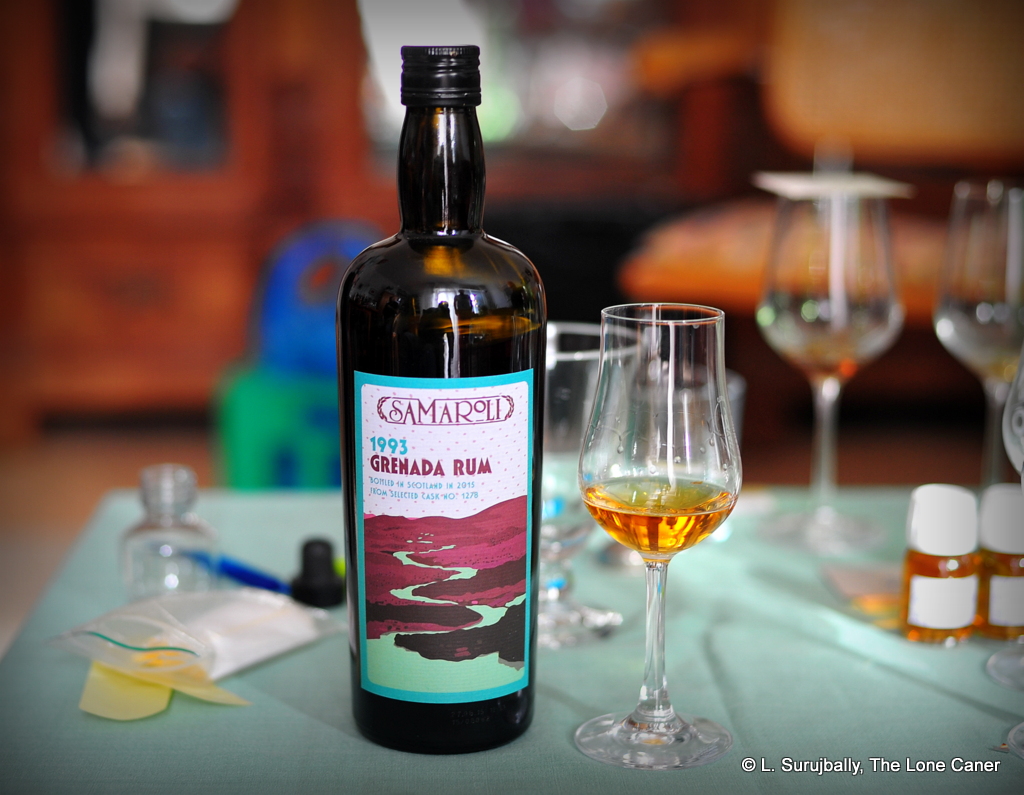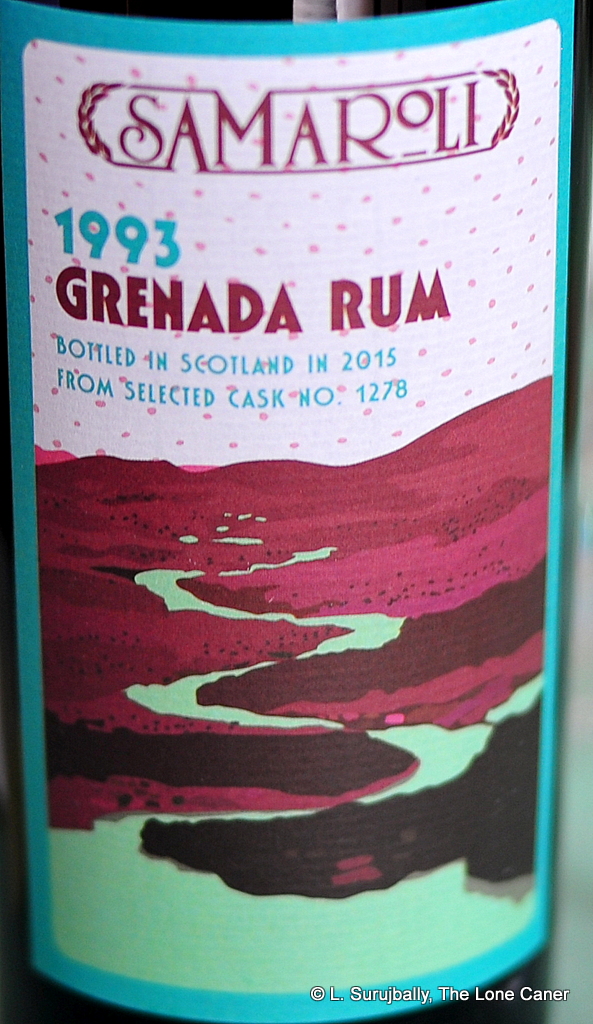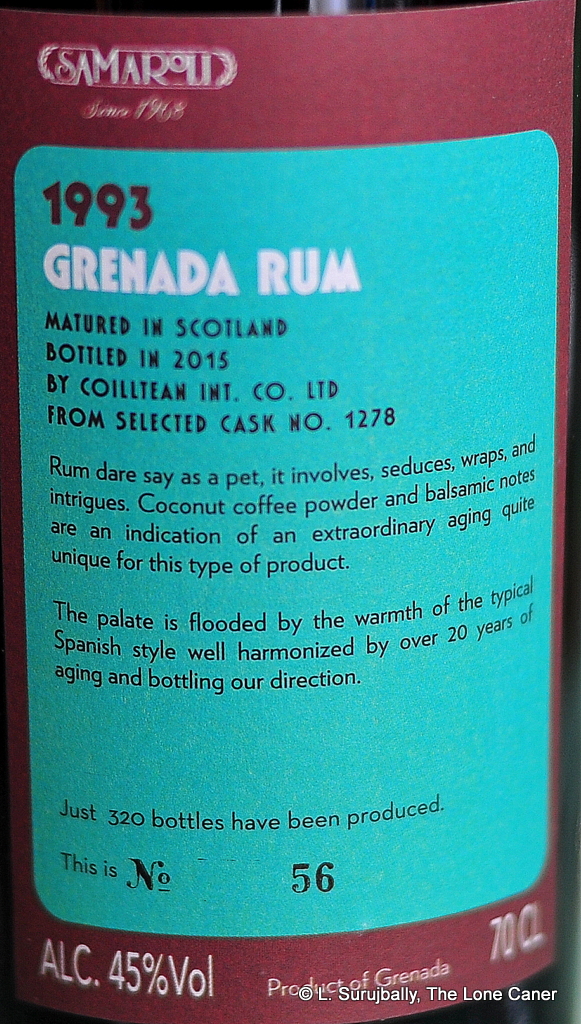
Recently I was observed to be writing more reviews of obscure rums nobody ever hears about (or can get) than the commonly favoured tipple and new releases favoured by the commenterati. That’s a completely fair thing to say, because I do. Not because I want to be behind the times — I’m gutted I couldn’t try the three new pot-still Appletons from Velier so many people are waxing rhapsodical about, for example — it’s more a factor of my current location, and inability to travel and the cancellation of the entire 2020 rumfest season.
It’s also as a somewhat deliberate choice. After all, there are loads of people rendering opinions on what’s out there that’s and new and interesting, so what more could one blogger really add? And so I take advantage of these admittedly peculiar circumstances to write about rums that are less well known, a bit off the beaten track, but no less fascinating. Because there will always be, one day, years from now, questions about such bottles — even if only by a single individual finding a dust-covered specimen on some back shelf someplace, written off by the store or owner, ignored by everyone else.
 One such is this Samaroli rum sporting an impressive 22 years of continental ageing, hailing from Grenada – alas, not Rivers Antoine, but you can’t have everything (the rum very likely came from Westerhall – they ceased distilling in 1996 but were the only ones exporting bulk rum before that). You’ll look long and hard before you find any kind of write up about it, or anyone who owns it – not surprising when you consider the €340 price tag it fetches in stores and at auction. This is the second Grenada rum selected under the management of Antonio Bleve who took over operations at Samaroli in the mid 2000s and earned himself a similar reputation as Sylvio Samaroli (RIP), that of having the knack of picking right.
One such is this Samaroli rum sporting an impressive 22 years of continental ageing, hailing from Grenada – alas, not Rivers Antoine, but you can’t have everything (the rum very likely came from Westerhall – they ceased distilling in 1996 but were the only ones exporting bulk rum before that). You’ll look long and hard before you find any kind of write up about it, or anyone who owns it – not surprising when you consider the €340 price tag it fetches in stores and at auction. This is the second Grenada rum selected under the management of Antonio Bleve who took over operations at Samaroli in the mid 2000s and earned himself a similar reputation as Sylvio Samaroli (RIP), that of having the knack of picking right.
I would not suggest, however, that this is entirely the case here. The rum noses decently enough (it clocks in at 45% ABV) and smells pungently sweet, akin to a smoked-out beehive dripping honey into the ashes. There’s caramel toffee, bon bons, cinnamon, white chocolate and a kind of duskiness to the aroma that isn’t bad. After some time additional smells of vanilla and salted caramel ice cream can be detected, but on the whole it’s not very heavy in the fruits department. Some plums and dark berries, and a bare minimum of the tart notes of sharper fruit to balance them off.
The palate is, frankly, something of a disappointment after a nose that was already not all that exciting to begin with. Many of the notes that are present when I smell it return for a subtler encore when sampled: salted caramel ice cream, a dulce de leche coffee, more white chocolate with some nuttiness, honey, caramel, cinnamon, and very few crisp fruits that would have livened up the experience some. Raisins, dates, dried plums is more or less it and I really have no idea what the back label is on about when it refers to “typical Spanish style.” The finish is similarly middle of the road, as if fearing to offend, and gives up a few final notes of cinnamon, chocolate, raisins, plums and toffee, dusted with a bit of vanilla, and that’s about all you’re getting.
 So what to make of this expensive two-decades-old Grenada rum released by an old and proud Italian house? Overall it’s really quite pleasant, avoids disaster and is tasty enough, just nothing special. I was expecting more. You’d be hard pressed to identify its provenance if tried blind. Like an SUV taking the highway, it stays firmly on the road without going anywhere rocky or offroad, perhaps fearing to nick the paint or muddy the tyres.
So what to make of this expensive two-decades-old Grenada rum released by an old and proud Italian house? Overall it’s really quite pleasant, avoids disaster and is tasty enough, just nothing special. I was expecting more. You’d be hard pressed to identify its provenance if tried blind. Like an SUV taking the highway, it stays firmly on the road without going anywhere rocky or offroad, perhaps fearing to nick the paint or muddy the tyres.
The problem with that kind of undistinguished anonymity which takes no chances, is that it provides the drinker with no new discoveries, no new challenges, nothing to write home in shock and awe about. To some extent, I’d suggest the rum is a product of its time – in 2005, IBs were still much more cautious about releasing cask-strength, hairy-chested beefcakes that reordered the rumiverse, and were careful not too stray too far from the easy blends which was what sold big time back then. That’s all well and good, but it also shows that those who don’t dare, don’t win … and that’s why this rum is all but forgotten and unacknowledged now (unlike, of course, the Veliers from the same era). In short, it lacks distinctiveness and character, and remains merely a good way to drop two hundred quid without getting much of anything in return.
(#778)(80/100)
Other Notes
- 320 bottles of the 0.7 liter edition appeared….and another 120 bottles of a 0.5 liter edition
- The first Grenada rum selected by Bleve was the 1993-2011 45% with a blue label.
appreciate these types of posts – there’s still a lot of interesting old stuff out there that is simply not on the internet; so it’s nice to read about these bottles.